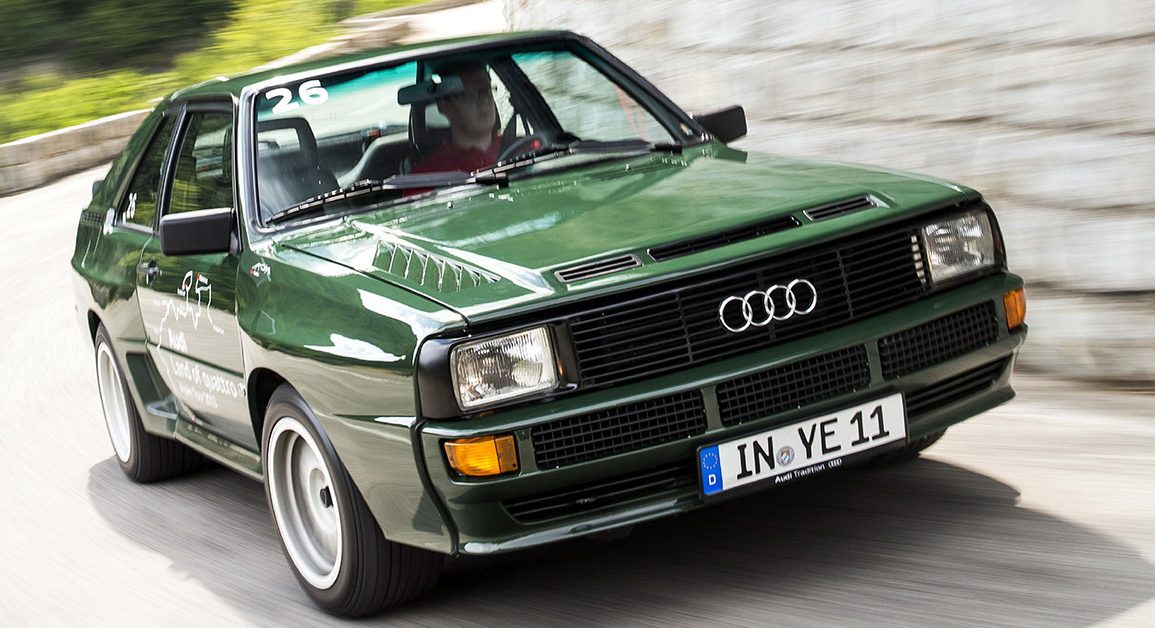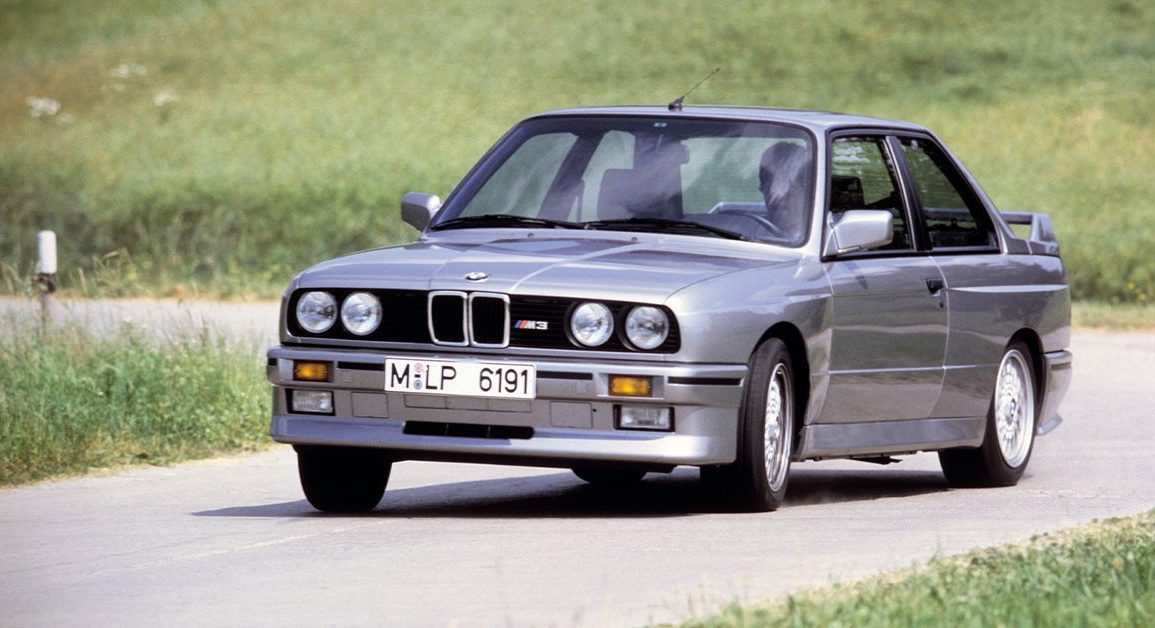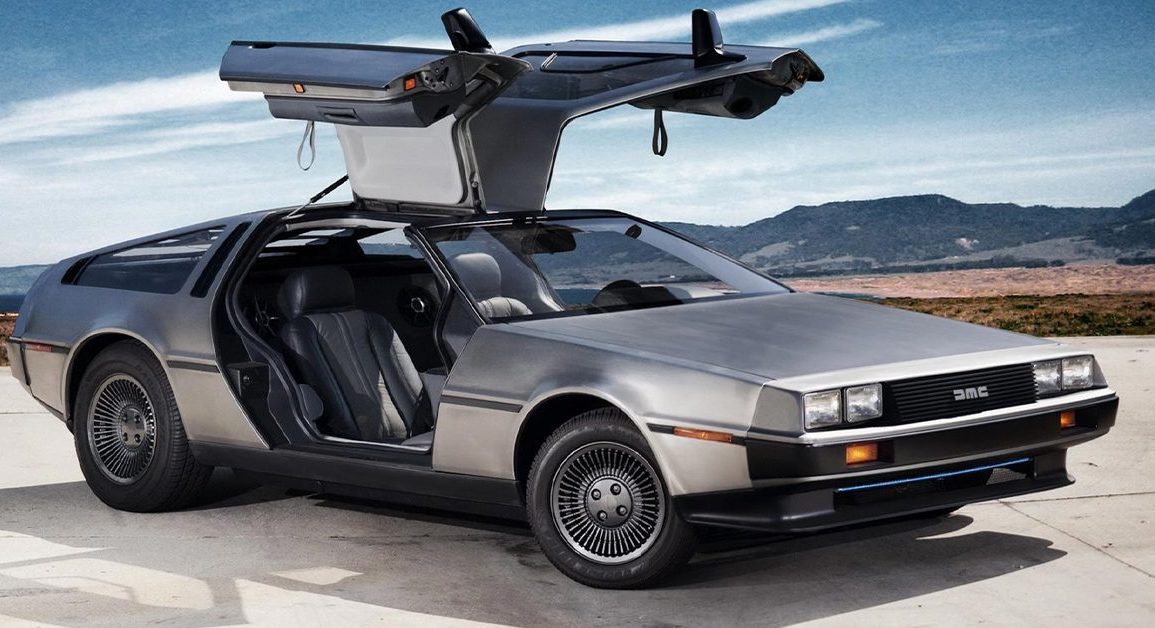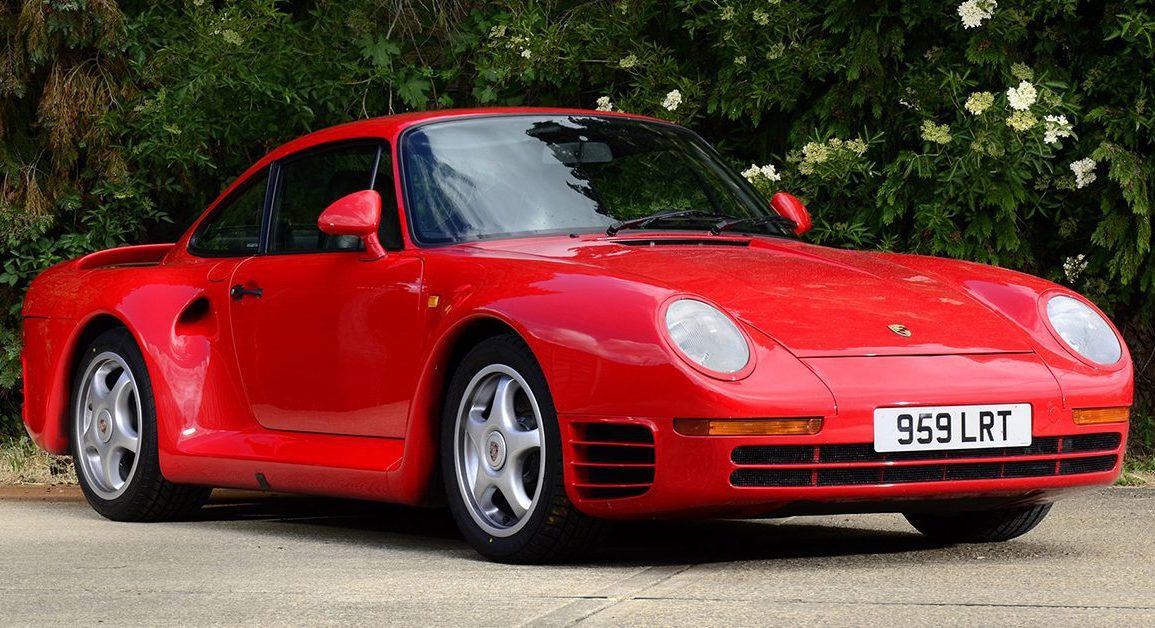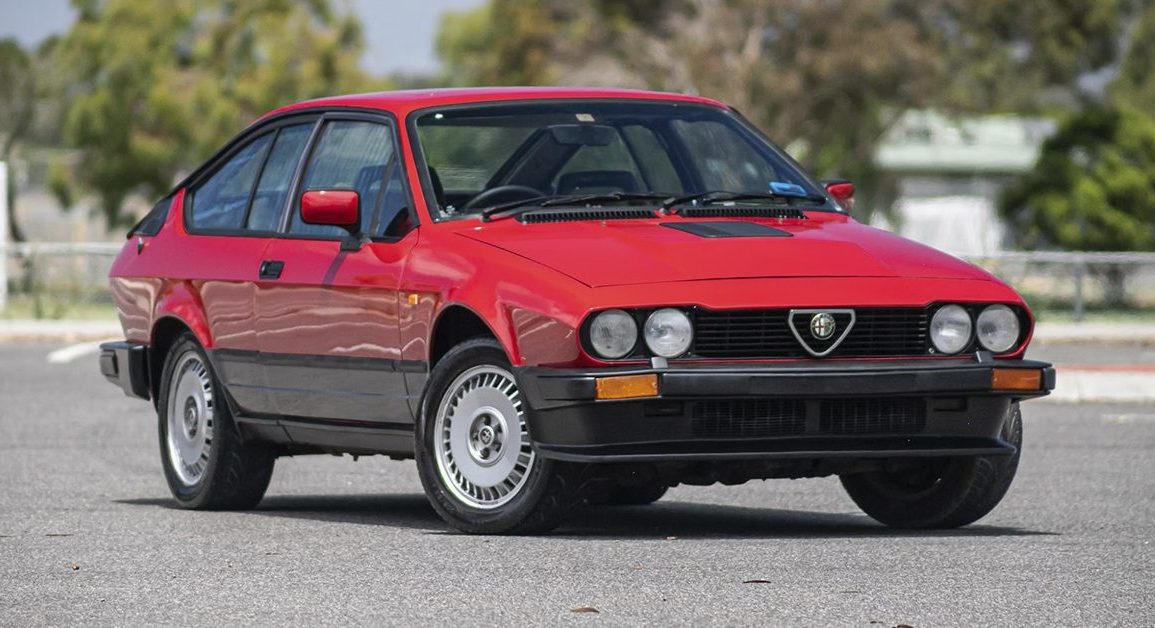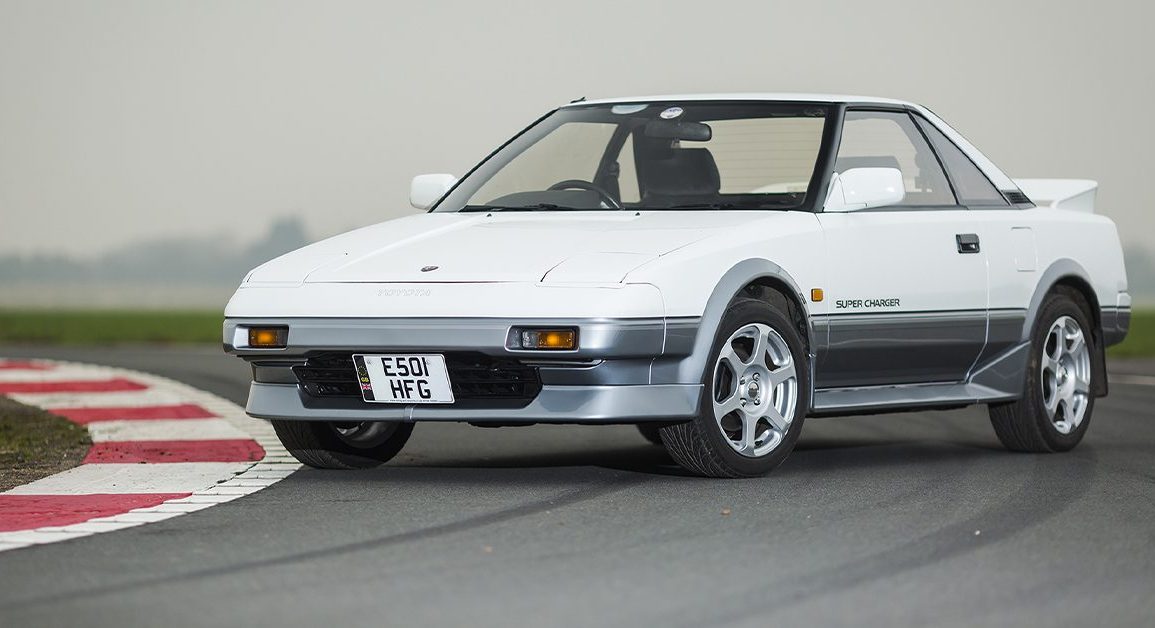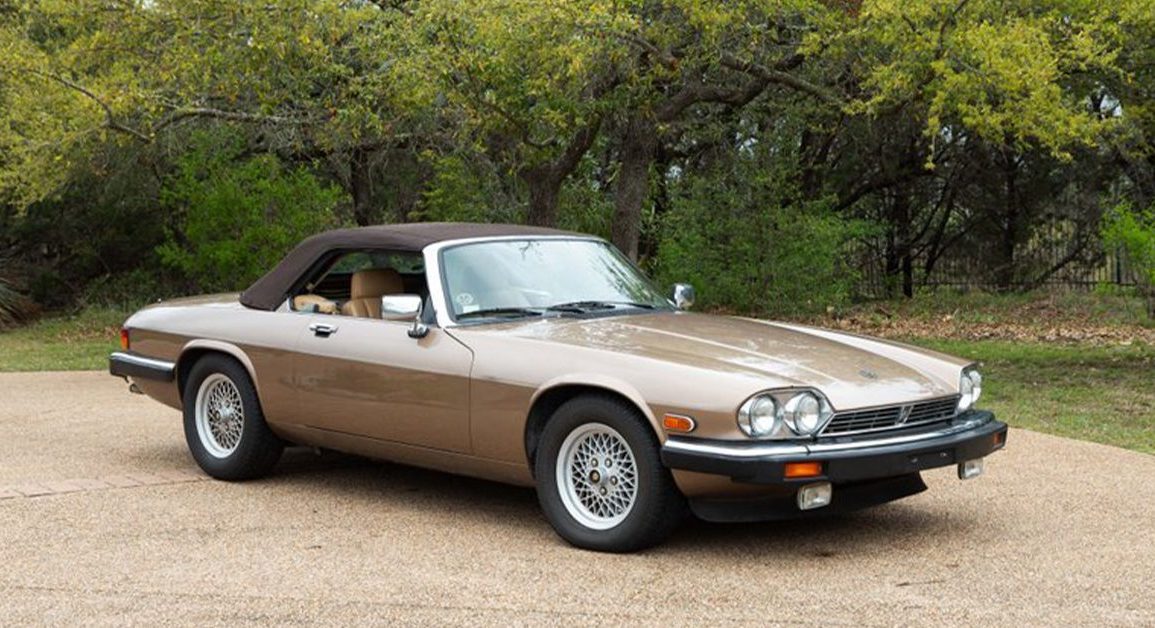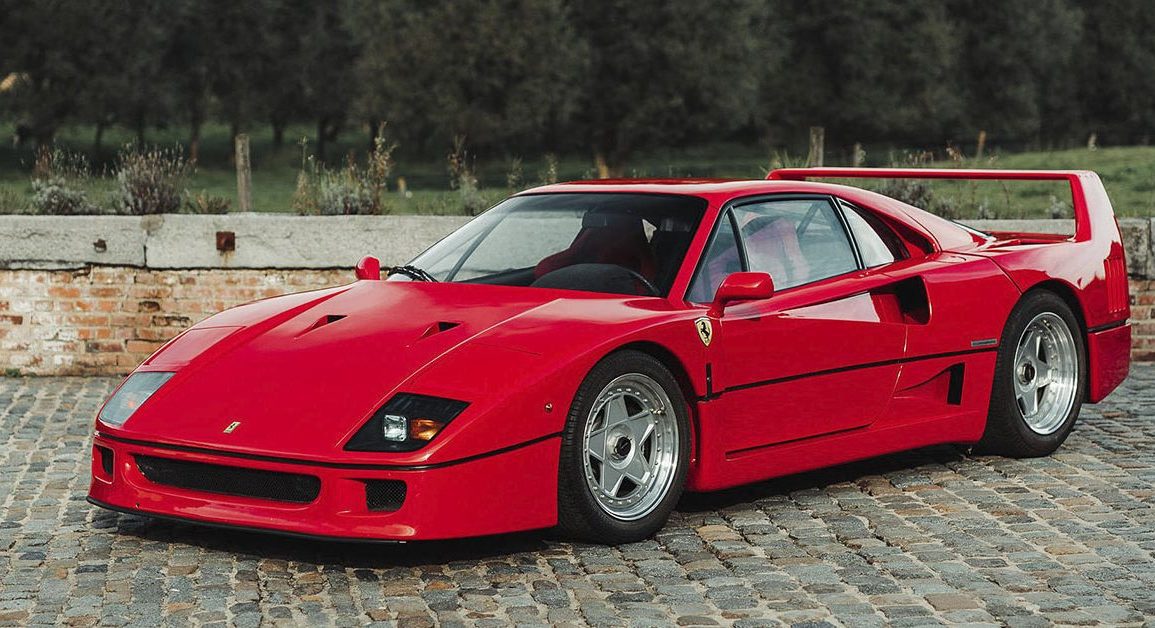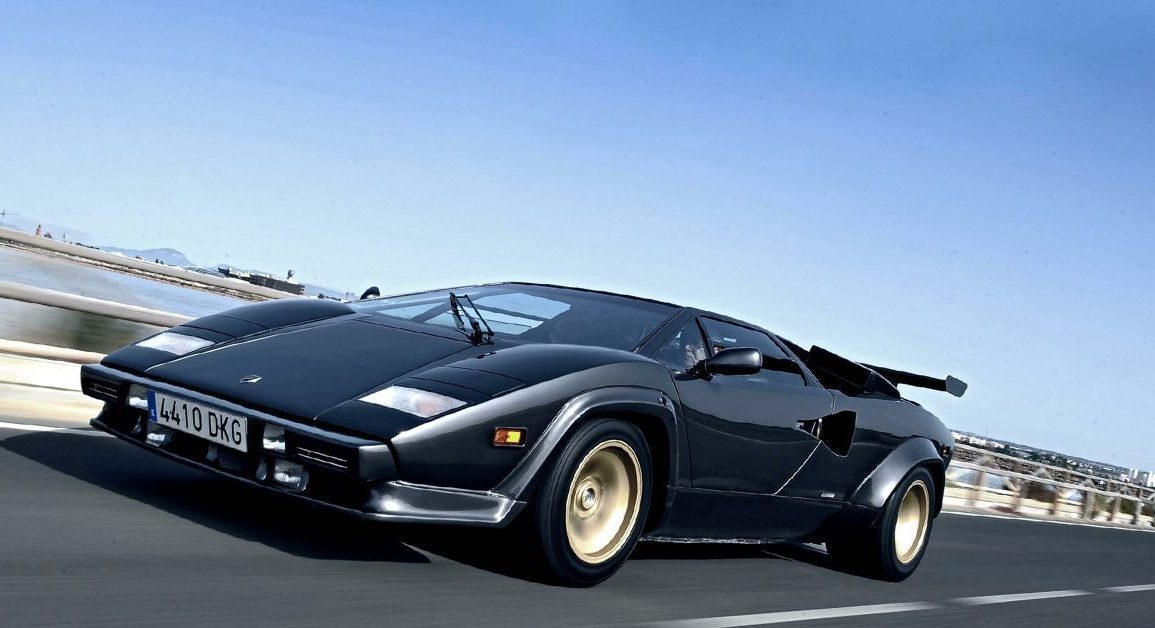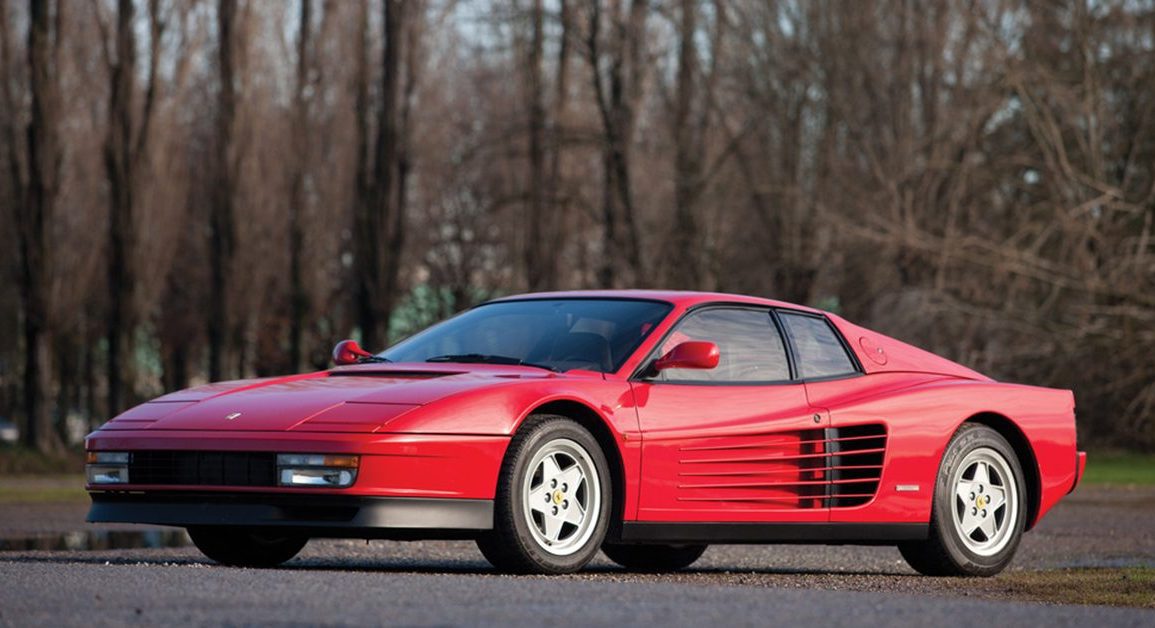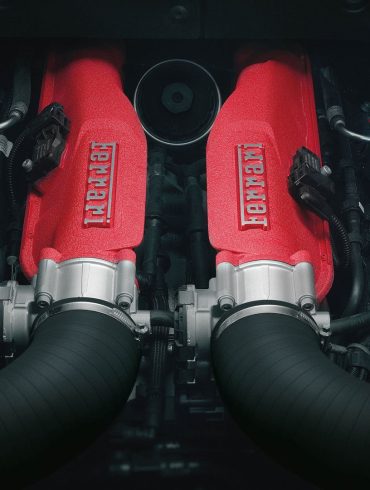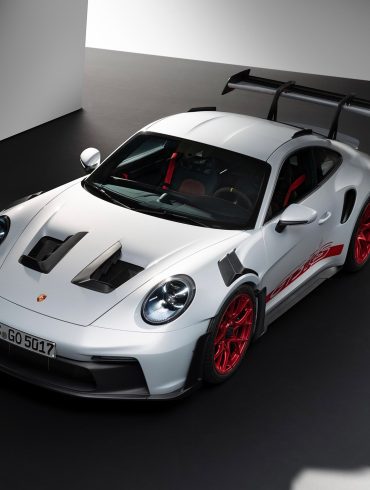Most Beautiful Cars Of The 1980s
Updated September 2023 by Eduardo Zepeda
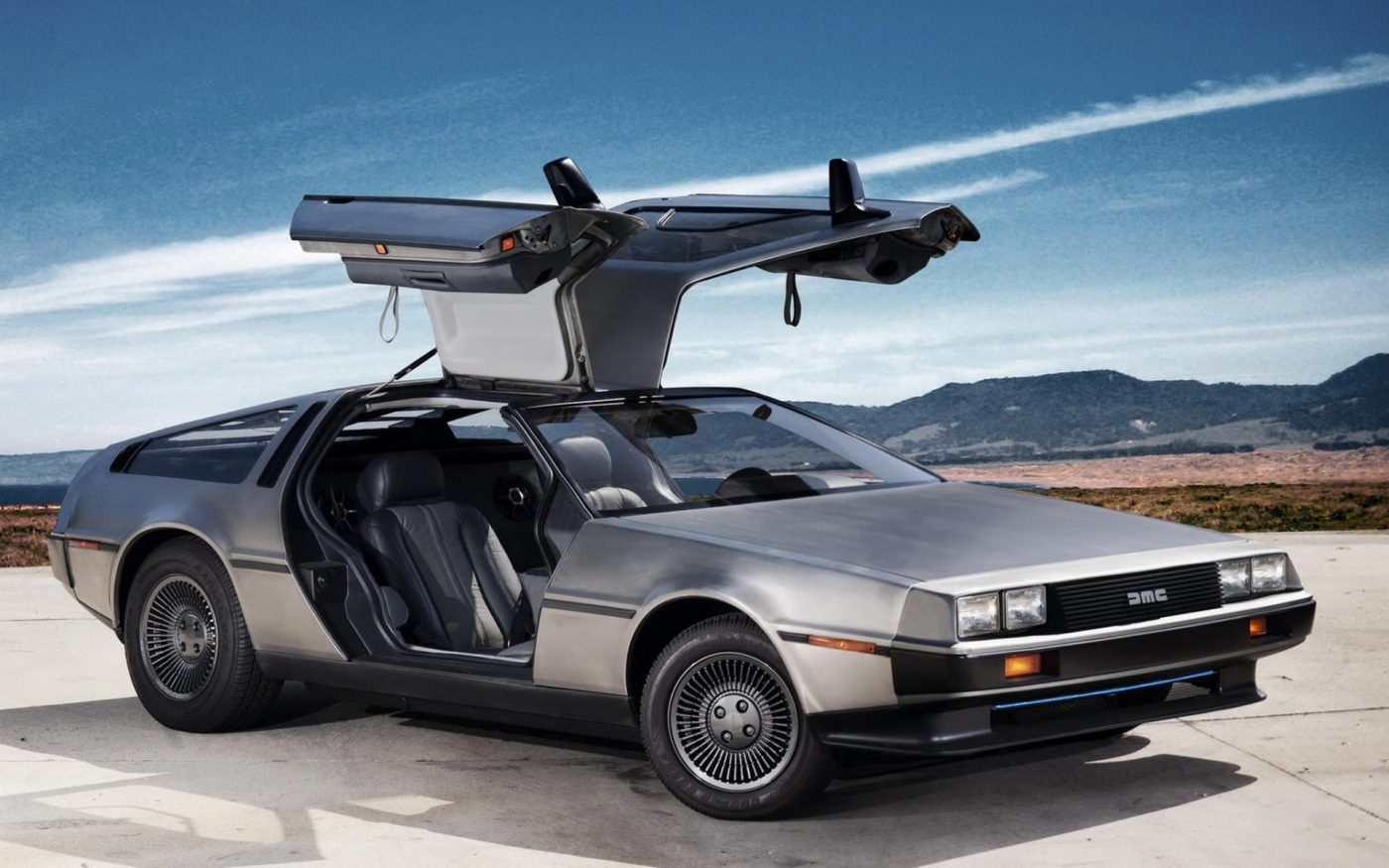
The 1980s produced some of the most iconic and popular poster cars in history
About Our Selections
The 1980s witnessed a fascinating blend of futuristic aspirations and retro influences in car design. Aerodynamics continued to gain importance, leading to smoother profiles, integrated bumpers, and flush-mounted headlights. Boxy shapes were also prevalent, with sharp edges and straight lines defining many popular models. Inside, digital dashboards and high-tech features like turbochargers and electronic fuel injection reflected the rise of computer technology. However, a renewed appreciation for classic designs also emerged, with retro-inspired models like the Ford Thunderbird and Chevrolet Camaro capturing the nostalgia for earlier eras. The 1980s were a decade of contrasts, where cutting-edge technology met nostalgic styling, resulting in a diverse and memorable automotive landscape.
Putting together this list was challenging since the eighties gave us some of the most iconic automobiles in history, so narrowing it down to only ten cars was no easy task. The 1980s brought us more than leg warmers and trendy mullet hairstyles. It was a decade that witnessed the emergence of some iconic cars in the world of automobiles. We’ll take a trip down memory lane to explore those classic poster cars with captivating designs that blend innovation, elegance, and that distinctive eighties vibe.
From sports cars that dominated racetracks to exotics that exuded sophistication and sensuality on city streets, the 1980s marked a golden era for automotive design.
1984 Audi Sport Quattro
The game changer
Why We Picked It:
The Audi Sport quattro revolutionized racing and street cars with its groundbreaking design and technology. When it debuted in 1984, it completely transformed the Audi market.
The quattro all-wheel drive system was one of the most notable additions to the Audi Sport. This system enhanced the vehicle's impressive traction, stability, and handling, making it a formidable competitor on roads and rally stages.
A turbocharged five-cylinder engine produced 306 horsepower and 258 pound-feet of torque in the Sport quattro. Audi's engineering prowess was on full display with the exciting acceleration and improved performance brought about by the combination of turbocharging and all-wheel drive.
The Audi Sport quattro was built with lightweight materials like Kevlar and carbon fiber. This emphasis on design resulted in enhanced performance by boosting agility and handling.
Specifications:
Price: $600,000-$1,000,000
Engine: 2.1L Turbocharged Inline-Five
Power: 300 hp
Torque: 258 lb-ft
Transmission: 5-Speed Manual
Curb Weight: 2,862 lbs
Highlights:
Hartmut Warkuss was responsible for designing the Sport Quattro, which featured several aggressive and angular styling cues, such as the wide body, the large air intake, and the sloping rear end, which achieved a drag coefficient of just 0.30.
The Audi Sport Quattro was one of the first cars to have a permanent all-wheel drive system, with innovative features such as a turbocharged engine and an unusual inline-five-cylinder layout.
Learn More:
1988 BMW M3 E30
A legendary homologation
Why We Picked It:
The unparalleled allure of the first-ever M3 vehicle explicitly created for Group A touring cars' homologation purposes is undeniable among many enthusiasts. Its engineering and motorsport heritage is worthy of its illustrious reputation for technological prowess and peak performance.
The M3 boasts the 'S14,' a compact yet hardy four-cylinder powerplant, sharing construction parts from an M10 block combined with a four-valve head transplanted from the S38 straight-six of an M5.
The engine is mated to a dogleg five-speed manual transmission, generating 200 horsepower and 176 lb-ft of torque. Its unique characteristics, including individual throttle bodies, made it an exceptional engine for racing and road use.
The E30 M3 featured a specially tuned suspension and chassis, resulting in exceptional handling characteristics. Its well-balanced and responsive nature made driving on the road and the track a joy.
Specifications:
Price: $50,000-$100,000
Engine: 2.5L Inline-Four
Power: 200 hp
Torque: 177 lb-ft
Transmission: 5-Speed Manual
Curb Weight: 2,866 lbs
Highlights:
Paul Bracq designed the vehicle and incorporated several iconic BMW design elements, including the kidney grille and the Hofmeister kink. The car has a low drag coefficient of 0.32.
The 1988 BMW M3 E30 was one of the earliest vehicles with a widebody package. Additionally, it had a limited-slip differential and a four-wheel independent suspension, among other novelties.
Learn More:
1981 DeLorean DMC-12
History's coolest automotive failure
Why We Picked It:
The DeLorean DMC 12, designed by Giorgetto Giugiaro with an undeniable resemblance to a Lotus Esprit, was also part of Giugiaro's polygonal "folded paper" designs. The DeLorean DMC-12 holds a special place in automotive history. Its stainless steel body and unique gull-wing doors make it instantly recognizable.
The DMC-12 was the brainchild of John DeLorean, a former General Motors executive who aimed to create a sports car like no other. The car's most unusual feature is its unpainted stainless steel body, giving it a futuristic look that's both sleek and timeless.
What distinguishes the DMC 12 is its status in pop culture as the time machine in the "Back to the Future" film trilogy. Despite facing production obstacles and having an existence, the DeLorean DMC 12 has gathered a devoted fan base and continues to symbolize innovation and style.
Specifications:
Price: $50,000-$100,000
Engine: 2.8L V6
Power: 130 hp
Torque: 162 lb-ft
Transmission: 5-Speed Manual
Curb Weight: 2,840 lbs
Highlights:
The DMC-12 was initially intended to be a luxury sports car, but financial problems and production delays plagued it.
The car's most distinctive feature is its gull-wing doors, which were inspired by the aircraft of the 1950s. The body is made of stainless steel, which gives it a unique look and makes it resistant to rust.
Learn More:
1986 Porsche 959
Sports car paradise
Why We Picked It:
One of the most popular poster cars in the world, along with the Countach and the Testarossa, the 959 was an unprecedented car with which Porsche created a “tech fest.”
Although this model was an excuse to get FIA Group B homologation to compete in the World Rally Championship, the 959 was meant to be suitable for daily driving but also be the fastest production car in the world.
Porsche sourced the 6-cylinder boxer twin-turbo engine from the 956 of Group C. It was a 2.8-liter flat-six producing 450 horsepower. The block was entirely made of aluminum and featured innovations such as sodium-filled exhaust valves, dry sump lubrication, and titanium connecting rods.
Additionally, the 959 had two KKK two-stage turbochargers with a twin intercooler and a Bosch Motronic electronic injection system and was the first Porsche to be water-cooled.
Specifications:
Price: $1,000,000-$2,000,000
Engine: 2.8L Turbocharged Flat-Six
Power: 444 hp
Torque: 369 lb-ft
Transmission: 6-Speed Manual
Curb Weight: 3,500 lbs
Highlights:
Tony Hatter designed the 959 with a wide body and sloping tail end, which are iconic design elements. The car has a very low drag coefficient of just 0.31, making it incredibly aerodynamic.
The 959 was one of the first vehicles with a widebody and boasted many other innovations, like a limited-slip differential and a four-wheel drive and four-wheel independent suspension.
Learn More:
1986 Alfa Romeo GTV-6
Another Giugiaro masterpiece
Why We Picked It:
Debuting a sports car during the oil crisis was a formidable obstacle, but the Italians were up to the job. They took the standard features, such as speed and handling, and added comfort and practicality similar to a saloon's.
Legendary designer Giorgetto Giugiaro created this Alfa's silhouette. The car features sharp lines, characteristic of the co-founder of Italdesign; the front end looks to flow into the dramatically sloped windshield.
Giugiaro's 1969 Iguana prototype inspired the iconic rear side window. The result of the "spearhead" line with the sharply cut rear is a drag coefficient of 0.39, which was very impressive at the time.
Alfa Romeo fitted a 2.5-liter 158 horsepower and 168 lb-ft of torque V6 engine to a five-speed manual gearbox in the GTV6, reaching 127 mph.
Specifications:
Price: $20,000-$60,000
Engine: 2.5L V6
Power: 158 hp
Torque: 168 lb-ft
Transmission: 5-Speed Manual
Curb Weight: 2,668 lbs
Highlights:
The GTV6's styling was not just for show; it was performance-oriented. Elements like the front air dam and alloy wheels were designed to improve aerodynamics and handling.
Inside, the GTV6 featured a driver-focused, minimalistic interior with well-bolstered seats and a simple yet stylish dashboard, focusing on the driving experience.
Learn More:
1982 Toyota MR2 Supercharged
The pocket size "supercar"
Why We Picked It:
It may not be a supercar, but it sure looks like one. The Toyota MR2 was the first production automobile in Japan to feature a rear mid-mounted engine.
The MR2 was designed to be a compact, fuel-efficient sports vehicle. It featured MacPherson strut front and rear suspensions, four-wheel disc brakes, and a transversely mounted inline-four engine.
Toyota opted for a supercharger of the Roots design. The MR2's peak outputs improved by 29 and 44 percent, thanks to the new blower and air-to-air intercooler, bringing them to 145 horsepower and 140 pound-feet of torque, respectively.
The 1986 Toyota MR2 offered an accessible entry point into the world of mid-engine sports cars, providing an engaging driving experience at a reasonable price. Its agile handling, lightweight construction, and unique design set it apart from other sports cars of its era.
Specifications:
Price: $10,000-$20,000
Engine: 1.6L Inline-Four
Power: 145 hp
Torque: 140 lb-ft
Transmission: 5-Speed Manual
Curb Weight: 2,600 lbs
Highlights:
The MR2 featured a compact, wedge-shaped design with pop-up headlights and a sleek, aerodynamic profile. Its angular lines and sharp edges were characteristic of the 1980s design trends.
The 1986 MR2 came with a removable Targa top, allowing for open-air driving and adding to its sporty appeal.
Learn More:
1989 Jaguar XJS
Pure Britishness
Why We Picked It:
William Heynes was responsible for designing the XJS, recognizable for its rear flying buttresses, along with Malcolm Sayer, a Jaguar aerodynamicist who was an early stylist and a pioneer in applying advanced aerodynamic principles to automobile design.
The XJS V12 was an amalgam of traditional British elegance and cutting-edge technology. It exuded class with its tall, streamlined bonnet and softly sloping roofline. The car's sleek, uninterrupted lines flowed elegantly from front to back, giving it a low, aerodynamic profile.
With 262 hp and 290 lb-ft of torque, the 5.3-liter V12 engine and three-speed automatic transmission made for effortless highway driving and quick acceleration.
The XJS V12, weighing roughly 3,800 pounds, was a solidly built grand tourer. It had an independent rear suspension and a customized Jaguar XJ basis; thus, the ride was smooth and controlled. It has high-tech electronic components, such as digital screens, for controlling various features.
Specifications:
Price: $15,000–$30,000
Engine: 5.3L V12
Power: 291 hp
Torque: 317 lb-ft
Transmission: 3-Speed Automatic
Curb Weight: 3,869 lbs
Highlights:
The 1989 Jaguar XJS V12 stands out as a unique and iconic luxury grand tourer, celebrated for its distinctive design, powerful V12 engine, and a blend of elegance and performance.
The XJS V12 provided a sumptuous cabin with premium leather upholstery, wood trim, and well-crafted details, creating an ambiance of refined opulence.
Learn More:
1987 Ferrari F40
The last "true Ferrari"
Why We Picked It:
The last Ferrari personally blessed by the great Enzo Ferrari is also among the most legendary supercars ever made. The Ferrari F40 has graced rooms of enthusiasts all over the world.
The F40 was designed to be a street racing machine featuring a tubular steel chassis, Kevlar body panels, a carbon fiber bonnet and doors, and a 2.9-liter twin-turbo V8 engine developing 478 horsepower and 425 pound-feet of torque linked to a five-speed manual transmission. It could reach 201 mph in top speed and 60 mph in 4.1 seconds.
The F40's low curb weight of 1,100 kilos was achieved using as little equipment as possible. Pininfarina's bodywork was meticulously tested in the wind tunnel to ensure optimal aerodynamic performance. It was quickly identified by its low hood, short front overhang, NACA air intakes, and massive spoiler in the back.
Specifications:
Price: $2,000,000–$3,000,000
Engine: 2.9L Twin-Turbocharged V8
Power: 478 hp
Torque: 425 lb-ft
Transmission: 5-Speed Manual
Curb Weight: 2,425 lbs
Highlights:
The F40's design was very distinctive with its wedge-shaped body, large air intake in the front, and sloping rear end. The F40 was made of lightweight materials, such as carbon fiber and aluminum, which helped keep the weight down.
The F40 was produced from 1987 to 1992, and only 910 examples were built.
Learn More:
1985 Lamborghini Countach LP5000 Quattrovalvole
The myth
Why We Picked It:
For some enthusiasts this is the quintessential poster car. Few supercar names evoke as much awe as the Lamborghini Countach. This iconic masterpiece set new standards for performance and left an indelible mark on automotive design.
Under the sleek bodywork, the Countach LP5000 Quattrovalvole housed a 5.2-liter V12 engine, producing 455 horsepower, propelling the car to a top speed of around 183 mph and a 0 to 60 mph time of just over 4 seconds.
However, it's the design of the Countach that truly set it apart. Marcello Gandini's wedge-shaped design, featuring scissor doors, sharp angles, and dramatic lines, was a radical departure from the curvaceous designs of its era. Its influence on subsequent supercars and the automotive industry cannot be overstated.
The Countach inspired a generation of designers, leading to the angular and futuristic designs that became synonymous with the supercar genre.
Specifications:
Price: $900,000–$2,000,000
Engine: 5.2L V12
Power: 455 hp
Torque: 340 lb-ft
Transmission: 5-Speed Manual
Curb Weight: 3,500 lbs
Highlights:
The Lamborghini Countach Quattrovalvole had a 5-speed manual transmission that was precise and allowed the driver to row through the gears quickly, smoothly, and in style, thanks to the gated shifter.
The Countach Quattrovalvole was built before 1987, so those without the sills and cars without the massive rear wing are believed to be the best-looking Countach ever.
Learn More:
1984 Ferrari Testarossa
A design ahead of its time
Why We Picked It:
The Ferrari Testarossa is regarded as one of the most iconic automobiles in history. Although brand loyalists were initially slow to warm up to the model due to its unconventional appearance, they eventually did.
The Pininfarina-designed vehicle appeared well ahead of its time. However, the Testarossa is now widely regarded as one of the most stunning Ferrari models ever produced.
A 5.0 flat-12 engine put out 390 horsepower and 354 pound-feet of torque in this vehicle. It had a top speed of 180 mph and could accelerate to 60 mph in 5.6 seconds.
The Testarossa represents an era of excess and performance in the automotive world. Its striking design, powerful engine, and impressive performance made it an instant classic. It remains an emblem of 1980s supercar design and is highly sought after by collectors who appreciate its unique style and performance.
Specifications:
Price: $150,000-$300,000
Engine: 4.9L Flat-12
Power: 385 hp
Torque: 361 lb-ft
Transmission: 5-Speed Manual
Curb Weight: 4,239 lbs
Highlights:
One of the most iconic Testarossa design elements is its side strakes, or "cheese grater" cooling vents.
The Testarossa boasted a striking wedge-shaped profile with a low, wide stance. Its sleek and angular design, along with its pop-up headlights, adds to its clean and aerodynamic front end.


